Notes: Rosslynlee opened with the Peebles Railway on 4 July 1855. Before the station opened it was to have been named Kirkettle, but when it opened it was called Roslin although the village was two miles away along a steep twisting road. It was renamed Rosslyn in June 1864, finally becoming Rosslynlee on 2 September 1872 after pressure from the NBR to avoid confusion with the station of the same name and slightly closer to Roslin on the recently opened Penicuik branch.
As with Hawthornden, Rosslynlee also catered for visitors to the Roslin chapel as well as serving a number of small villages.
The station had a single cinder-and-wood platform on the down side of the line. The single-storey stone station building was L-shaped with a pitched slate roof. The building faced onto the road with an entrance porch, typical of many stations on the branch. Its gable end walls extended above the roof line to form a parapet with small shoulders. It incorporated the stationmaster’s house and booking office. The building was later extended in timber on a brick base with a hipped slate roof. The extension stood between the two wings of the original building, fronting onto the platform. It had a narrow canopy and comprised general and ladies’ waiting rooms with a gents’ toilet at the north end.
There was a small goods yard behind the platform. This comprised one siding running into a dock which was the back face of the platform. For a small station the goods yard was surprisingly busy. One of the major customers was the Esk Paper Mills of James Brown and Co whose products were made for the London market.
In late 1858 the Peebles Railway agreed to build a shed for the storage of saltpetre (Potassium Nitrate - used in the manufacture of explosives) for Messrs. Hay, Merricks and Co. The company carried 600 tons of saltpetre and limestone on the railway per year. The stone shed was 12 ft x 15 ft x 8 ft high and cost £19 to build.
Initially there was no signal box, but a small single-storey box was provided in the early years of the 20th century. It was south of the crossing on the down side.
The station was closed as an economy measure during WW1 on 1 January 1917, reopening on 2 June 1919. The goods yard closed on 3 August 1959 although a private siding remained in use after that date.
BRIEF HISTORY OF THE PEEBLES RAILWAY
Initially a market town, Peebles played a role in the woollen industry of the Scottish Borders until the 1960s. Today only one woollen mill remains operational in the town. In the mid-to-late 19th century the town became a popular tourist destination centering around hydropathic establishments as Peebles developed as a popular spa resort. Peebles lies at the confluence of the River Tweed and Eddleston Water. The Tweed flows west to east, and the Eddleston flows from the north turning to flow south-west 300 yards before the confluence.
 |
The first proposal for a railway at Peebles came as early as 1810 when Thomas Telford proposed a horse-drawn tramway between Glasgow and Berwick passing through Peebles; nothing came of this or a similar scheme proposed by Robert Stevenson in 1821. Further abortive schemes were to follow before the town finally got its railway connection. Most |
notable of these came in 1841, when the promoters of the Peebles based National Railway of Scotland hatched a grand plan for a line from Lancaster to Peebles where it would split with one line continuing to Glasgow while the other served Edinburgh. A royal commission was appointed and it concluded that only one Anglo-Scottish route was required which should be the Caledonian Railway's proposal for a line between Carlisle and Glasgow with a branch from Carstairs to Edinburgh.
Despite this ruling, the North British Railway opened their east coast Anglo-Scottish route between Edinburgh and Berwick in 1846, two years before the Caledonian opened their line. In the 1840s, in order to tap into the important borders woollen industry based round the River Tweed, the NBR made an approach to buy the existing 4' 6" horse-drawn Edinburgh & Dalkeith Railway, which would be incorporated into a proposed new route between Edinburgh and Hawick; this received parliamentary authorisation in 1845 and the sale was completed later that year. The line was subsequently converted to standard gauge and doubled, reopening to Dalhousie in July 1847. Construction of the extension to Hawick was rapid, opening in stages as the line forged its way south. Gorebridge opened on 14 July 1847 and by 20 February 1849 it had reached Galashiels (12 miles west of Peebles), finally arriving at Hawick, where a terminus was opened on 1 November 1849.
There was a proposal to include a branch from the Hawick line to Peebles but it was deleted from the Bill. A branch from the Caledonian's Glasgow route to Peebles was also dropped but it marked the start of fierce competition between the Caledonian and the NBR to bring the first railway to the town. In the meantime an independent group was formed to promote a double track line from Edinburgh to Peebles via Penicuik. Sufficient capital was raised and a Bill was put before Parliament in 1846 but it fell by the wayside as 'Railway Mania' enveloped the country.
There were no further schemes until 1851 when a group of influential Peebles residents and businessmen once again put forward a proposition to put Peebles on the railway map. The suggested route would run from a junction with the Edinburgh and Hawick line at Eskbank via Bonnyrigg and Hawthornden to a summit at Leadburn from where it would decent into the Eddleston valley into Peebles, a distance of 18¾ miles. Edinburgh based engineer Thomas Bouch was employed to survey the proposed route. Bouch was well know for building inexpensive railways and he priced the construction of the Peebles line at £49.065 with a further £10,000 required to cover Parliamentary and other costs.
A locally based company was formed and a Bill was put before Parliament. The Peebles Railway Act received Royal Assent on 8 July 1853 with an authorised capital of £70,000 in £10 shares with additional borrowing powers up to £23,000. The bill stipulated that the line should to be completed within five years. The first sod was cut at Peebles at a well attended public ceremony on 9 August 1853, with work also beginning ay Eskbank. The board decided to work the line themselves rather than hand it over to the NBR as this would bring additional revenue for the shareholders. Staff were recruited to run the line and suitable locomotives and rolling stock were ordered.
In March 1855 contractor’s, Bray and Dyson, announced that the line could be opened in May and in April the company’s loco 'Soho' completed the inaugural trip into Peebles from Eskbank. The first passenger train pulled into Peebles on 29 May 1855 carrying invited guests.
The Board of Trade inspection followed on 28 June and it was reported that Captain Price was "highly pleased with the works". He did however place a restriction with only one train in steam being allowed on the line. Considering the length of the line the company objected and the inspector relented on the condition that the line was divided into two sections, Eskbank - Penicuik (Pomathorn) and Penicuik - Peebles. This was agreed and the line opened for passenger and goods traffic without ceremony on 4 July 1855 with three daily passenger trains to Edinburgh. Intermediate stations were provided at Eddleston, Leadburn, Penicuik, Roslin (Rosslynlee) and Hawthornden with Bonnyrigg opening a month later. An additional short lived station at Earlyvale Gate had opened by June 1856.
 |
The line was immediately popular with a large reduction in the cost of transporting goods to market. The transport of livestock quickly increased and a weekly grain market was established. The company promoted the building of new housing in Peebles with free tickets being offered for a number of years to anyone who built a new house in the area. With the immediate success of the line and the prosperity it brought to Peebles it came as no surprise when and extension to Galashiels on the Edinburgh and Hawick line was proposed.
| On 21 May 1858. the Symington, Biggar and Broughton railway was formed to bring a second line into Peebles from the west. Initially this local company didn’t worry the Peebles Railway board but when the Caledonian Railway decided to back the new venture it was soon clear that if this line was build it would present serious competition. In November 1859, the |
 |
SB & B put a Bill before Parliament to extend there partially constructed line into Peebles. To counter this, the NBR persuaded the Peebles Railway to promote a Bill for a line from Peebles to Galashiels via Innerleithen. The NBR were determined to block any attempt by the Caledonian to extend beyond Peebles but the Bill failed due to pressure from the Caledonian and their supporters.
The NBR were determined not to be beaten and they formed the Galashiels & Peebles Railway with a new Bill being put before Parliament the following year. In an attempt to stop the rivalry between the two railway giants the NBR and the Caledonian came to an agreement which included a link with the Caledonian at Peebles in the NBR scheme allowing through running for the Caledonian over NBR metals both to the PR's Peebles station and to Galashiels. The Caledonian was also given powers to build mineral depots at Innerleithen and Galashiels.
Despite a last minute change of mind by the Caledonian the North British (Galashiels and Peebles) Railway Act came into force on 28 June 1861 and the Caledonian finally gave up any attempt to extend beyond Peebles.
In 1860 the NBR announced that they were intending to put a Bill before Parliament for the amalgamation of the Peebles Railway with the NBR. Satisfactory terms were eventually agreed and having worked the Peebles Railway themselves for six years the board finally handed over the running of the line to the NBR on 1 February 1861 and from 11 July that year the line was leased to the NBR under the North British Peebles Railway (Lease) Act 1861. On 1 August 1861 parliamentary approval was give for the amalgamation of the SB & BR with the Caledonian.
There was still one further line to complete the story and on 1.6.1862 the independent Leadburn, Linton and Dolphinton Railway received its Act of incorporation for a line from Leadburn on the Peebles Railway to a junction with the Caledonian at Dolphinton.
Peebles station was resited to the south on 5 February 1852 in connection with the Galashiels extension but the old station was retained as a goods station. As work on the Galashiels line continued, the Caledonian's extension to Peebles opened on 1 February 1864. The Dolphinton - Leadburn line opened on 4 July 1864 and the first section of the Galashiels line opened to Innerleithen with one intermediate station at Cardrona on 1 October 1864, having opened to goods traffic several weeks earlier. Initially, there was a service of 4 weekday trains between Innerleithen and Edinburgh with two on Sunday. The final section of the line between Innerleithen and Galashiels opened on 18 June 1866 with intermediate stations at Clovenfords and Thornielee, with a third station at Walkerburn opening on 1 January 1867. This completed what became known as the Peebles loop of the Waverley route.
 |
There were two further branches. In January 1863 the Esk Valley Railway opened negotiations with the NBR to build a branch line to Polton in the valley of the River North Esk. These negotiations also involved the Peebles Railway as the intended route would use PR land, running alongside the Peebles line before turning north half a mile west of Hardengreen junction. The |
proposed line was strongly supported by the NBR who intended to lease and operate it. The EVR obtained their Act on 21 July 1863 and construction started on 5 September 1864. Having laid the parallel track, the Esk Valley Railway came to an agreement with the Peebles Railway. Rather than operate as two single tracks the two companies would share the tracks operating as a double track line between Esk Valley Junction and Hardengreen Junction.
On 28th June 1870 the nominally independent Penicuik Railway obtained an Act to build a 4-mile branch to Penicuik from a junction with the Peebles Railway at Hawthornden. The branch opened on 2 September 1872. Both the Penicuik Railway and the Esk Valley Railway were absorbed into the NBR on 1 August 1876.
In 1873 there was a proposal to double the Peebles line between Leadburn and Esk Valley Junction. Initially this was initially supported by the NBR but when they withdrew their support the proposals were dropped. The line was eventually doubled between Esk Valley junction and Hawthornden Junction.
The Peebles Railway Company finally gave into pressure and was absorbed into the North British Railway under the North British Railway (Additional Powers) Act of 13 July 1876 with the amalgamation taking effect on 1 August 1876. At that time there were three daily trains between Edinburgh and Galashiels with a fourth terminating at Innerleithen. By 1910 there was a small improvement with five trains each way on weekdays but on Sundays there was one train each way between Edinburgh and Innerleithen and one each way between Edinburgh and Peebles.
In the 1923 grouping the North British Railway was absorbed into the London & North Eastern Railway but by the 1930s completion from motor busses was beginning to take its toll on passenger numbers. Despite this, the LNER did little to keep their existing passengers or attract new ones.
| By 1938 there was little change in the service with five weekday trains and an additional late night service on Saturdays to bring people back from a day or evening out in Edinburgh. Unusually the outward train ran via the Peebles loop but returned to Edinburgh on the Waverley main line. By this time the Sunday service had been withdrawn altogether and it was never |
 |
reinstated.
After WW2 came nationalisation and passenger numbers continued to fall dramatically. By 1951 the service had been reduced to three daily trains between Edinburgh and Galashiels with two additional trains on Saturdays. The former Caledonian line between Peebles and Symington closed to passengers from 5 June 1950, three months later the former NBR station was renamed Peebles East with the now goods only former Caledonian station becoming Peebles West.
The centenary of the opening of the Peebles Railway in 1955 was marked by the closure of the engine shed at the old Peebles terminus and the closure of the Menzies bookstall on Peebles station! It was clear that the Peebles loop was on borrowed time.
In 1958 the steam service was replaced by DMUs and it was hoped that this might revitalise the flagging fortunes of the line as the DMUs were cheaper to run than steam. The introduction of DMUs saw an immediate improvement in the service with eight weekday trains between Edinburgh and Galashiels and nine on Saturdays. This service remained the same until closure of the line.
In October 1961 British Railways announced its intention of closing the line between Roswell & Hawthornden and Galashiels. Peebles Town and Peeblesshire County Council vigorously opposed the closure. In response, BR stated "We haven't decided on closure; we have just asked for opinions to the proposal." they followed this with the statement "The traffic on the line is just not sufficient to justify its existence."
Despite the improved service after the introduction of DMUs passenger numbers had not improved sufficiently and despite the campaign to keep the line open closure was announced for Saturday 3 February 1962. During the day a last-day steam railtour with 150 enthusiasts on board called at Peebles and the last train into Peebles was the Saturdays only service from Edinburgh which was met by a piper and almost 200 people. Detonators that had been placed on the line were set off as the last train pulled out of the station.
Official closure was from Monday 5 February, with the line closing to all traffic between Hawthornden Junction (Rosewell) and Kilnknowe Junction (Galashiels). Peeblesshire became the first county on the Scottish mainland without passenger trains. There was one final service along the line on 14 March, a month after closure, hauled by B1 class 61029 'Chamois'. This was not a public train and was only for BR officials. Following this, track-lifting started almost immediately between Kilknowe (Galashiels) and Hawthornden Junction and was completed by June 1963.
Although a local service from Edinburgh Waverley to Rosewell & Hawthornden was maintained, it was short-lived, passenger trains being withdrawn from 10 September 1962. Rosewell & Hawthornden closed completely but Bonnyrigg yard remained open until 25 January 1965. The track was singled on 29 November 1962 but remained in use to serve the goods-only Penicuik branch until 27 March 1967 when the final section of the Peebles Railway closed.
BR Scottish Region fitted totems (probably after 1957) at the following Peebles Loop stations: Bonnyrigg, Rosewell & Hawthornden, Rosslynlee, Pomathorn, Eddleston, Peebles, Innerleithen, Walkerburn and Clovenfords.
Tickets from Michael Stewart, timetable from Alan Young, route map drawn by Alan Young.
Sources:
To see other stations on the Peebles loop click on the station name
Bonnyrigg, Rosewell & Hawthornden, Rosslynlee Hospital Halt, Pomathorn, Leadburn, Earlyvale Gate, Eddleston, Peebles 1st, Peebles 2nd, Cardrona, Innerleithen, Walkerburn, Thornilee, Angling Club Cottage Platform
& Clovenfords
|

old2.jpg)

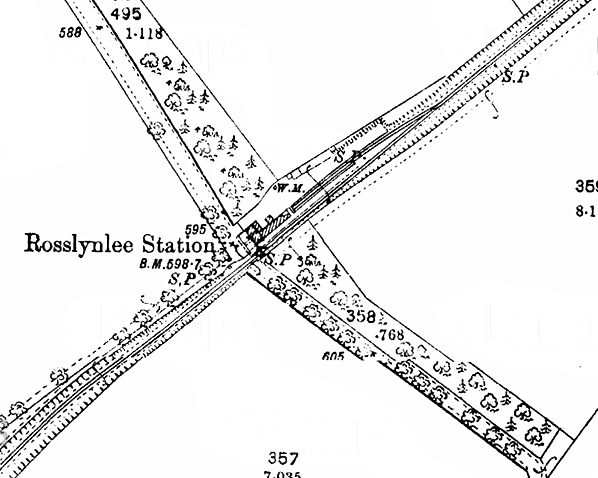
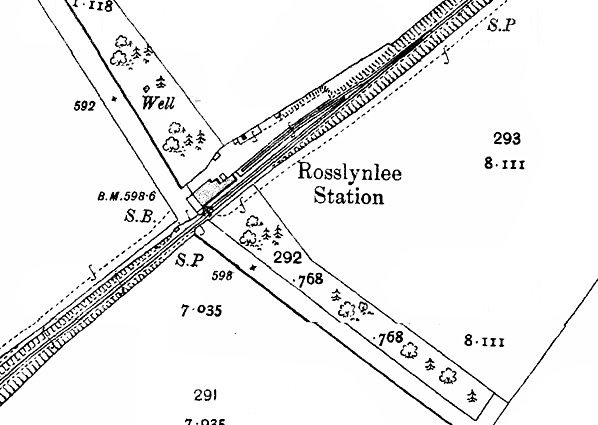
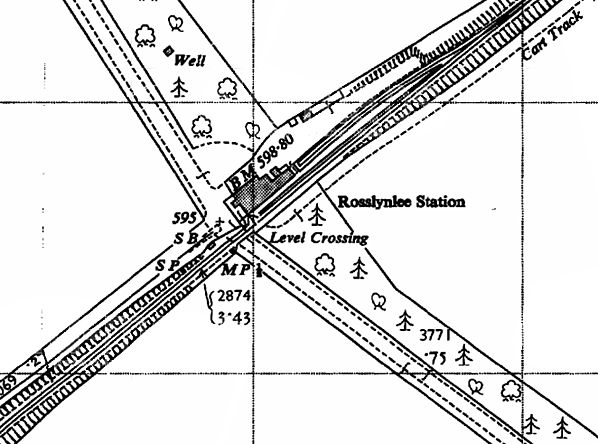
old4.jpg)
old5.jpg)
old3.jpg)
old1.jpg)
2.jpg)
4.jpg)
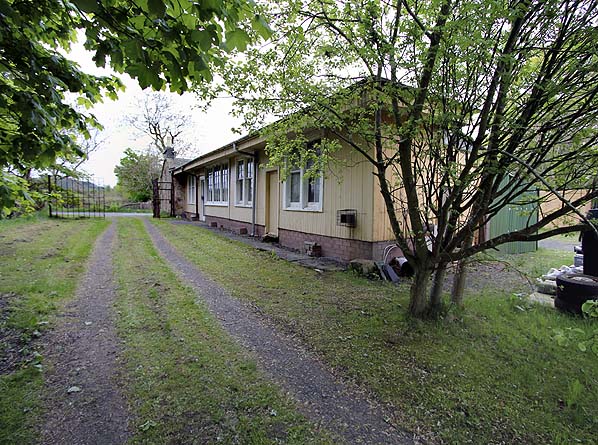
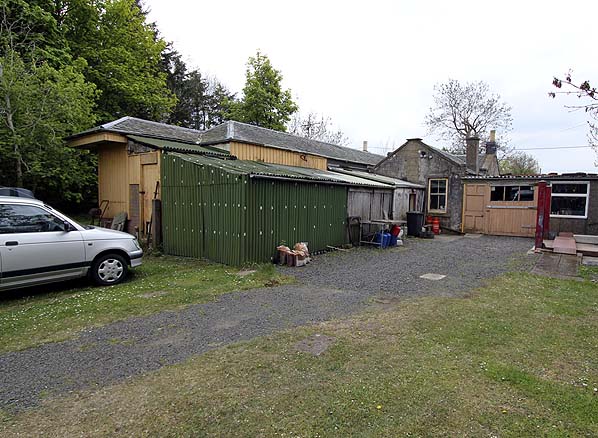




young.gif)


thumb1.jpg)
thumb3.jpg)





thumb12.jpg)
thumb14.jpg)
 Home Page
Home Page